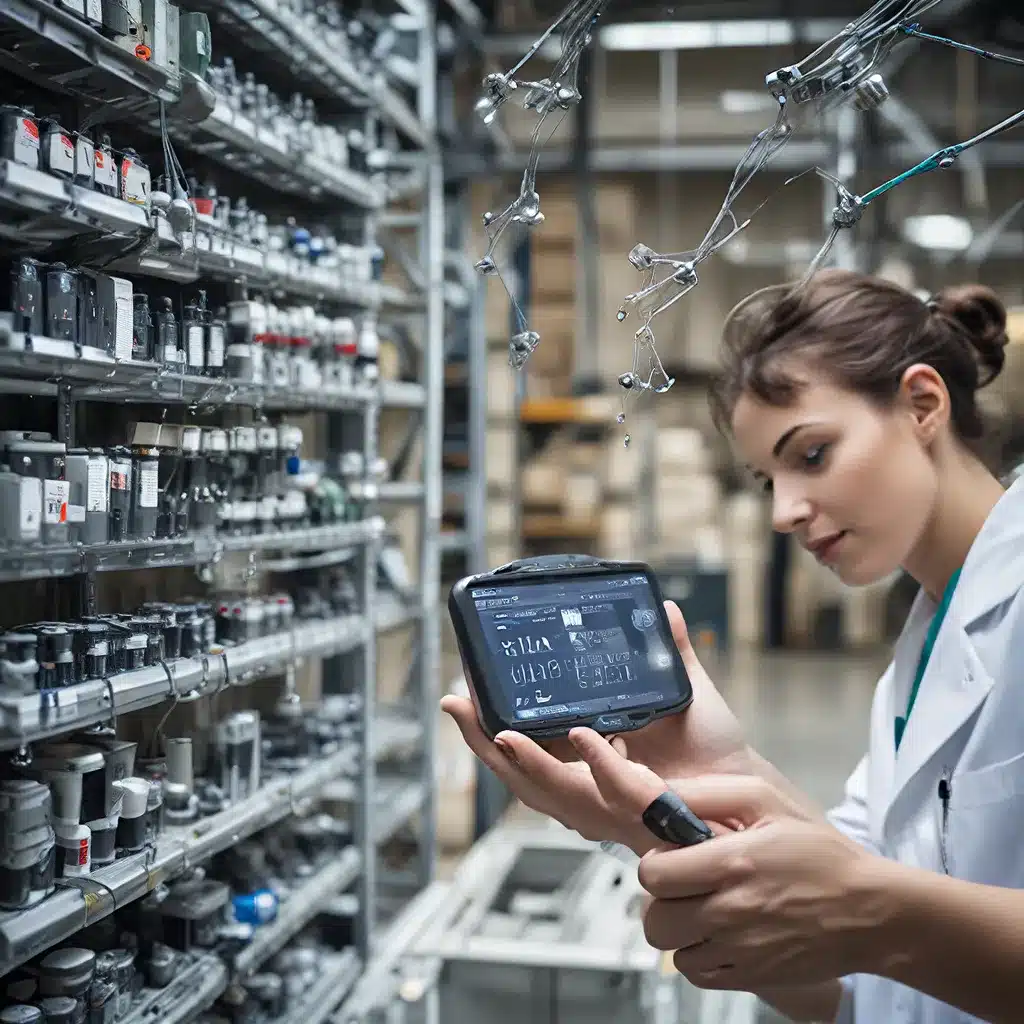
In the ever-evolving landscape of the pharmaceutical industry, sensor networks and Internet of Things (IoT) technologies are playing a pivotal role in revolutionizing supply chain management. As the demand for safe, effective, and accessible medications continues to rise, the pharmaceutical supply chain has faced increasing challenges, from temperature fluctuations and product spoilage to delivery delays and theft. However, the integration of sensor networks and IoT solutions is empowering pharmaceutical companies to overcome these obstacles and ensure the reliable and efficient delivery of critical drugs and medical supplies.
Leveraging Sensor Networks for Predictive Maintenance
At the heart of this transformation lies the implementation of sensor networks throughout the pharmaceutical supply chain. These interconnected systems of sensors, gateways, and data analytics platforms enable real-time monitoring and analysis of critical parameters, such as temperature, humidity, and vibration levels, during storage and transportation.
Recent studies have shown that by deploying sensor networks in pharmaceutical warehouses and logistics operations, companies can proactively identify potential issues and initiate predictive maintenance strategies. This approach allows for the early detection of equipment malfunctions, environmental changes, or other disruptions that could compromise the integrity of pharmaceutical products.
For example, sensor-equipped pallets or containers can continuously transmit data to a centralized monitoring system, alerting supply chain managers to any deviations from the optimal storage conditions. This enables them to take immediate action, such as adjusting temperature controls or rerouting shipments, before a problem escalates and leads to product spoilage or delivery delays.
Enhancing Supply Chain Visibility and Traceability
Beyond predictive maintenance, sensor networks in the pharmaceutical supply chain also improve overall visibility and traceability. By leveraging Radio Frequency Identification (RFID) and GPS technologies, companies can track the precise location and status of individual pharmaceutical products throughout their journey, from production to the point of consumption.
This increased transparency enables pharmaceutical manufacturers and distributors to respond more effectively to supply chain disruptions, such as product recalls or delivery delays. By having real-time data on the location and condition of their products, they can quickly identify affected batches, notify healthcare providers, and initiate appropriate corrective measures.
Moreover, the traceability provided by sensor networks and IoT solutions can enhance regulatory compliance within the pharmaceutical industry. By maintaining a comprehensive record of the supply chain journey, companies can more easily demonstrate adherence to Good Manufacturing Practices (GMP) and Good Distribution Practices (GDP), which are critical for ensuring product quality and patient safety.
Addressing Security and Energy Efficiency Challenges
As the pharmaceutical industry increasingly relies on sensor networks and IoT technologies, it is crucial to address the associated security and energy management challenges. Pharmaceutical data, including patient information and product details, is highly sensitive and must be protected from unauthorized access or tampering.
| Security Protocol | Key Features |
|---|---|
| Transport Layer Security (TLS) | Provides end-to-end encryption for data communication, ensuring the confidentiality and integrity of information exchanged between sensor nodes and the central monitoring system. |
| Blockchain-based Authentication | Leverages the decentralized and tamper-resistant nature of blockchain technology to verify the identity of sensor nodes and grant access to authorized entities. |
| Edge Computing and Fog Networks | Processes and analyzes sensor data at the edge, reducing the need for continuous data transmission and mitigating the risk of data breaches. |
In addition to security, the energy efficiency of sensor networks in the pharmaceutical supply chain is a critical consideration. Sensor nodes are often deployed in remote or inaccessible areas, and their reliable, long-term operation is essential for continuous monitoring and data collection.
Emerging technologies, such as energy harvesting and low-power communication protocols, are enabling the development of sustainable sensor network architectures that can operate with minimal maintenance and reduced energy consumption. By optimizing the energy usage of these systems, pharmaceutical companies can ensure the longevity and reliability of their sensor-driven supply chain monitoring solutions.
Unlocking the Full Potential of Sensor Networks in Pharmaceutical Supply Chains
As the pharmaceutical industry continues to navigate the complexities of global supply chain management, the integration of sensor networks and IoT technologies has become a critical strategic imperative. By leveraging these advancements, pharmaceutical companies can enhance product quality, improve efficiency, and mitigate the risk of supply chain disruptions.
Sensor-Networks.org provides a comprehensive resource for professionals, researchers, and enthusiasts interested in exploring the latest developments in sensor network design, IoT applications, and the role of these technologies in transforming industries like pharmaceuticals. As the industry continues to evolve, the innovation and insights shared on this platform will be instrumental in shaping the future of the pharmaceutical supply chain.